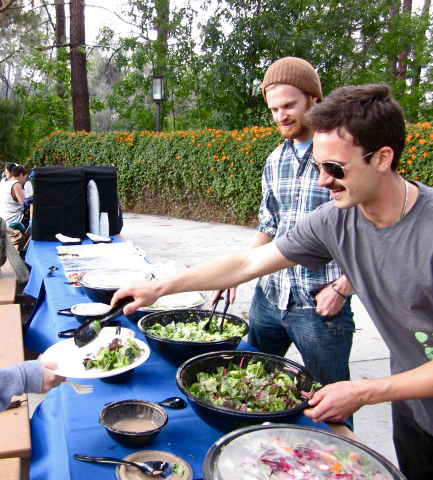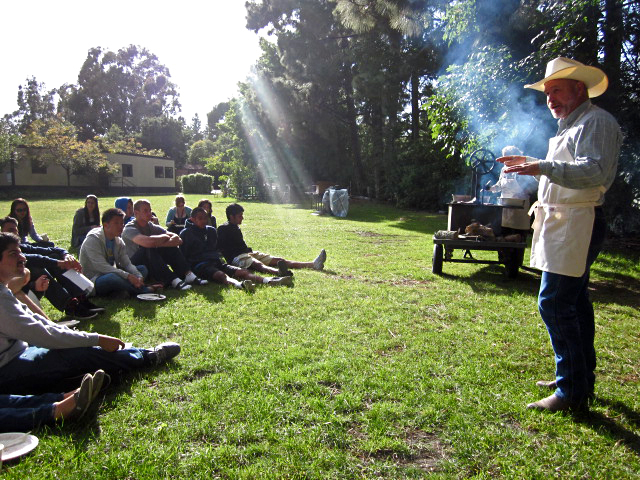
Anthony Passantino (left) and Dane Peterson serve organic food to students at an event to promote locally grown and organic products. Greener sources of foodstuffs could help UCLA Dining reach its 2020 sustainability target.
Courtesy of Sandra Wittenberg
Cage-free eggs and organic salad bars are a start, but some UCLA students are looking for more ways to make dining halls sustainable.
UCLA Dining aims to have the Hill eateries reach 20 percent sustainable dining by 2020. As of August 2010, that number was at 2.45 percent.
An action research team of six students participating in the Education for Sustainable Living Program is bringing locally grown organic food to the forefront as a way to reach this goal.
On Wednesday, the team held an event in the Sunset Canyon Recreation Center to educate students about sustainable food with speeches as well as free grass-fed beef burgers, said co-team leader Sandra Wittenberg, a fourth-year environmental science student and former Daily Bruin photographer.
Laird Foshay, the owner of Adelaida Springs Ranch in Paso Robles, donated the beef patties and spoke to around 120 students who attended about the sustainable approach to food.
While it is better for the environment to purchase locally grown organic foods, a university with demands as large as UCLA’s would need to go through larger suppliers rather than small boutique ranches like Foshay’s, he said.
The point of the event was mostly to garner support from students for the idea of increasing sustainable foods, Wittenberg said.
“It seems like a lot of students aren’t that interested,” Wittenberg said before the event. “We want students to show that they really want sustainable foods.”
She said events like this provide a way to show students the benefits of sustainable food through interaction rather than just telling them.
Patricia Reyes, buyer supervisor for Housing and Hospitality, said she pays attention to student requests when compiling procurement options for dining.
Reyes said that in order to allocate money toward buying organic and locally grown products, the cost would have to be balanced in other areas.
Although this may not be possible right away, the action research team is compiling a list of suppliers and products available in the Los Angeles area that UCLA Dining will be able to use in the future.
“We (would) have to figure out how we can adjust (cost) in other areas to balance out the cost of the program without incurring more expense to students,” Reyes said.
